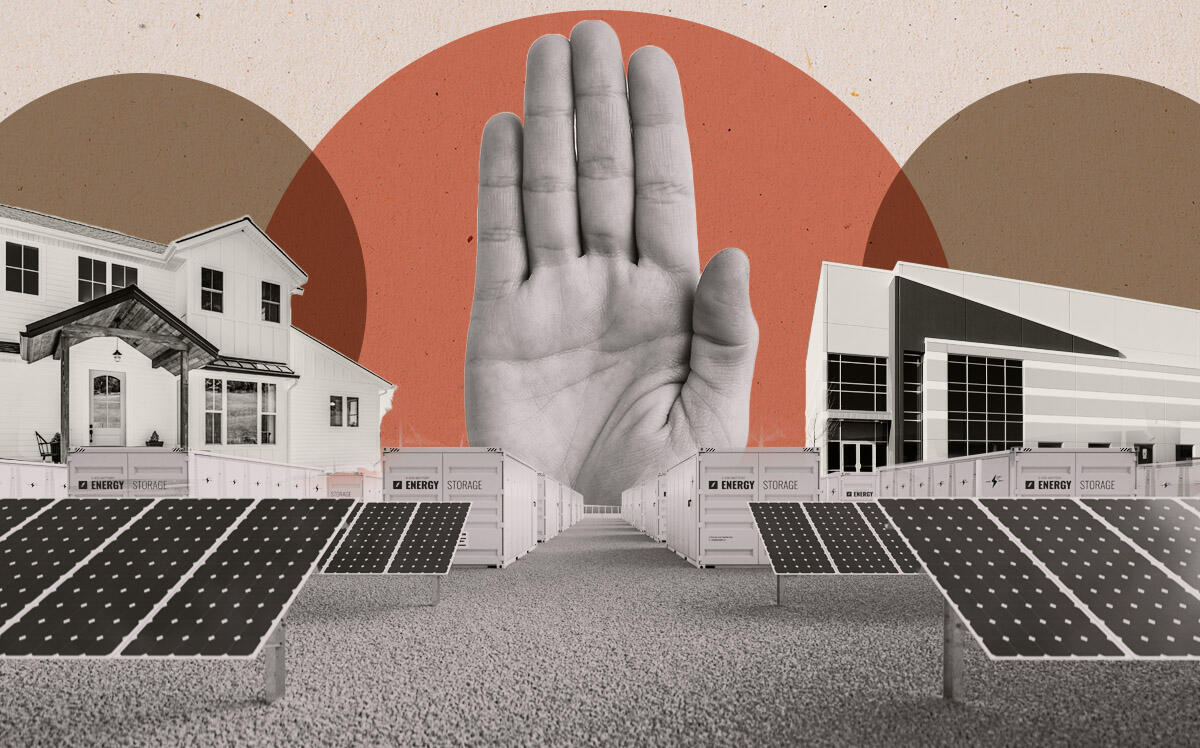 Vice squad: Project foes put squeeze on Brooklyn pol
Vice squad: Project foes put squeeze on Brooklyn pol
Trending
Moratorium mania: Development bans keep popping up
Suspensions range from housing to warehouses to solar farms

A question for the folks in Greenport who want to suspend all development:
Where do you think you’d be living, dining, and shopping if your predecessors in the Long Island village had done that?
Thirteen months ago, also on the North Fork, the Town of Riverhead banned new solar farms in Calverton for a year, ostensibly to study the issue and possibly change its code. A year passed, during which the town did nothing, so last month it extended the ban another year.
Now Riverhead is considering another moratorium, this time on industrial development for 18 months. The town doesn’t want any more of the trucks that deliver all the stuff its residents order on Amazon.
It could be that the number of trucks depends on how much stuff people order, not whether there’s a local distribution hub. But apparently a year wasn’t long enough for Riverhead to figure that out.
Or, more likely, it doesn’t want to. Politicians tend to prioritize the constituents who appear before them at meetings — who are often dead-set against change in their communities.
That explains why the same officials who ban warehouses to curb truck emissions, noise and congestion also ban solar farms, which produce no emissions, noise or congestion. Indeed, solar reduces emissions, by cleanly replacing what the oldest, dirtiest power plants produce.
Some bans are worse than others. Southold Town, which includes Greenport, last month banned large homes on small lots in response to a grassroots campaign against “monstrosities” rising next to 1970s ranch homes.
The opponents did not have much in the way of data to show why large homes are a problem. Yes, new mansions have more square footage to heat and cool, but old, small homes are notoriously drafty and inefficient. No one has asked the town to make their owners seal cracks and insulate attics.
The large-homes ban was never about data, though. The critics just didn’t like how the mansions looked. The ban that passed, fortunately, was fairly modest. The sliding scale that determines how large a home can be allows 2,100 square feet on a parcel of 0.23 acres, for example, and 10,000 square feet on a 4.6-acre lot.
Still, it points to a disconnect: The reason no one builds starter homes in places like the North Fork is that the town’s large-lot, single-family zoning has made land too expensive for developers to justify building anything other than large, luxurious houses. There’s no profit in constructing a $500,000 home on a plot that costs $400,000.
Read more
 Vice squad: Project foes put squeeze on Brooklyn pol
Vice squad: Project foes put squeeze on Brooklyn pol
 North Fork mansion ban: “Monstrosities” no longer welcome
North Fork mansion ban: “Monstrosities” no longer welcome
 When pols ignore past, city pays price
When pols ignore past, city pays price
Meanwhile, another Long Island town, Hempstead, tried to do the right thing by zoning for 1,000-plus apartments near Long Island Rail Road stations in North Lawrence and Inwood. But out came the pitchforks, and the town council placated the mob with a six-month moratorium on housing development of any kind in the two villages.
It was a classic example of people comfortable in their single-family homes denying residency to anyone who can’t afford that luxury.
Long Island is the most extreme example of that common American phenomenon: Free-standing, single-family homes account for 81 percent of housing in Suffolk County and 75 percent in Nassau. Only Fort Bend, outside Houston, has a higher percentage among the nation’s 100 most populous counties.
All of these examples are from Long Island, but moratoriums can happen anywhere. California, which has the nation’s busiest port and probably more Amazon shoppers than any state, has seen numerous anti-warehouse movements this year.
Tiny Scandia, Minnesota, passed and extended a moratorium on solar farms, with the blessing of a purportedly progressive mayor.
One planning commission member was aghast.
“We’re reaching a point where we are running out of time [to prevent irreversible global warming], and if we keep putting our energy in moratorium, how are we going to be hand in hand with sustainable energy?” she said.
Moratoriums do have their place. They buy time to study and regulate a sudden, unexpected trend that is likely to do more harm than good. We could analyze, for example, if suburbanites’ internet orders really generate more traffic than their in-person shopping.
But solar farms? Housing? Every day that too much carbon rises into the atmosphere or another person remains homeless causes a harm that can never be undone.
More often than not, moratoriums appear to be lazy governing or an alternative to leadership when a few voters object to something new. Sometimes they prove anything but temporary, because once enacted, they develop constituencies that rally to keep them.
Rent control, a response to the rent spike caused by soldiers returning from World War II, is a case of that. New York politicians repeatedly extended it until 2019, when they made it permanent. The millionaires’ tax, billed as a budget patch when first passed during the Great Recession, also fits that mold.
The tax, arguably, worked out well: Billionaires did not flee the state. Development moratoriums, though, lack a policy rationale. They tend to be knee-jerk responses to quell a political problem. What we need is evidence-based decision-making and leadership to see it through. Sometimes it seems there is a moratorium on that.




